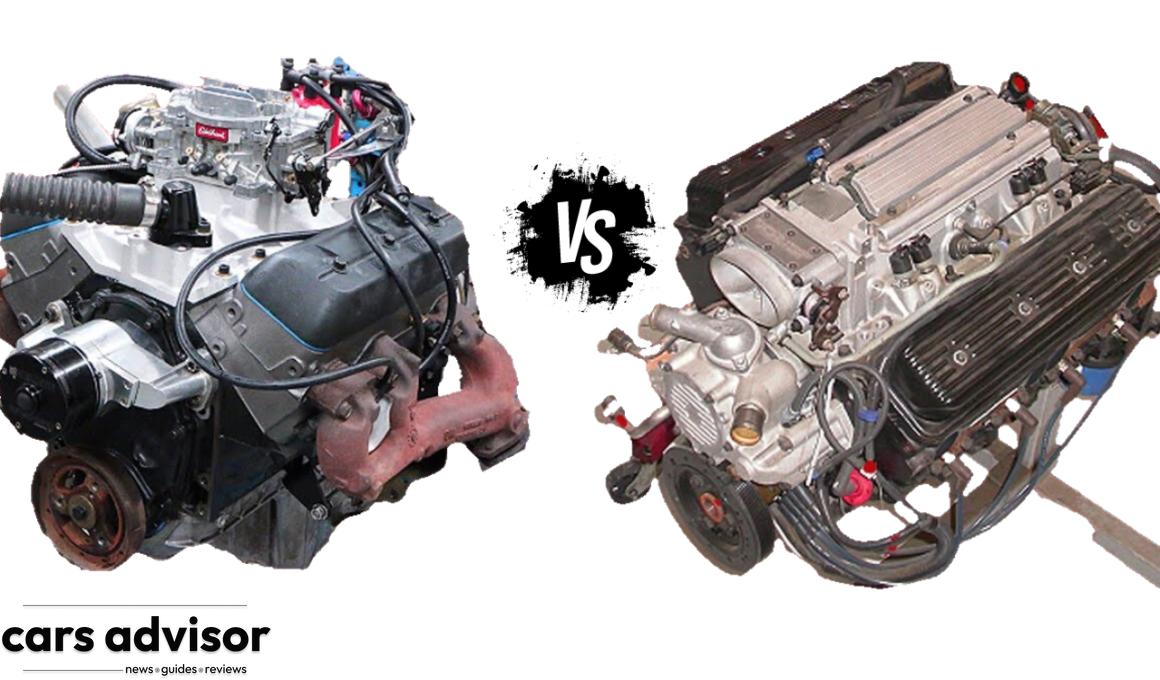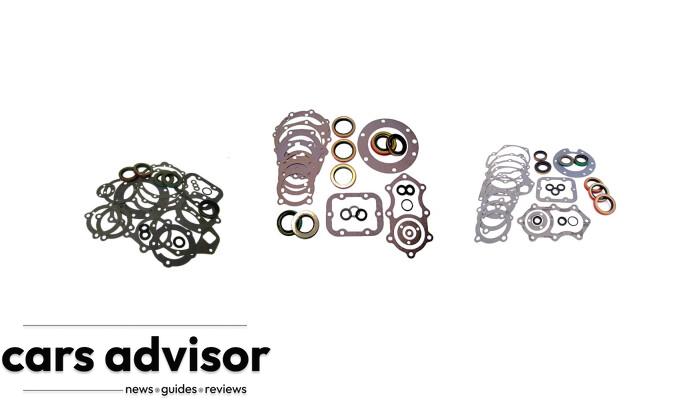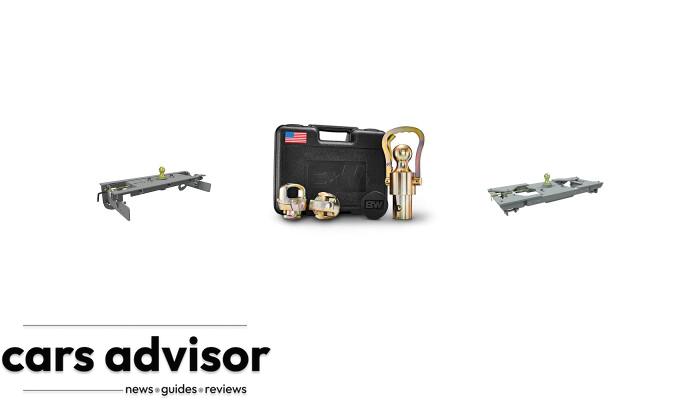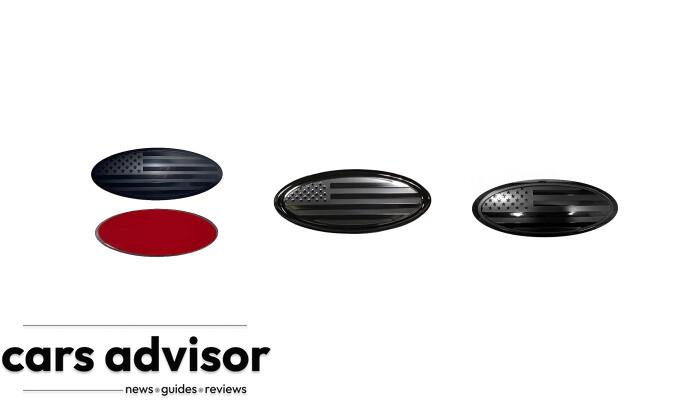Understanding the difference between 4 3 and 4 3l Vortec engines is often confusing. Both are similar in design, but subtle differences can greatly impact an engine’s performance.
This article will explain what sets these two engines apart from one another, so you can decide which type of engine is best for your needs.
First, we’ll look at some basics about both engines, such as their origin and design specifications. We’ll then compare them side-by-side to determine how they differ from each other and discuss why this matters when it comes to choosing between them.
Finally, we’ll examine any safety considerations related to these engines so readers can make an educated choice with confidence in mind.
At the end of this article, readers should be well-equipped with all the information to decide if a 4.3 or 4.3 Vortec engine is right for their specific application.
So join us now as we explore the world of internal combustion engines!
Definition Of 4.3-Liter Vortec Engine
The 4.3-Liter Vortec engine is a reliable and powerful small-block Chevrolet engine that has been around for decades, providing strong performance to families everywhere.
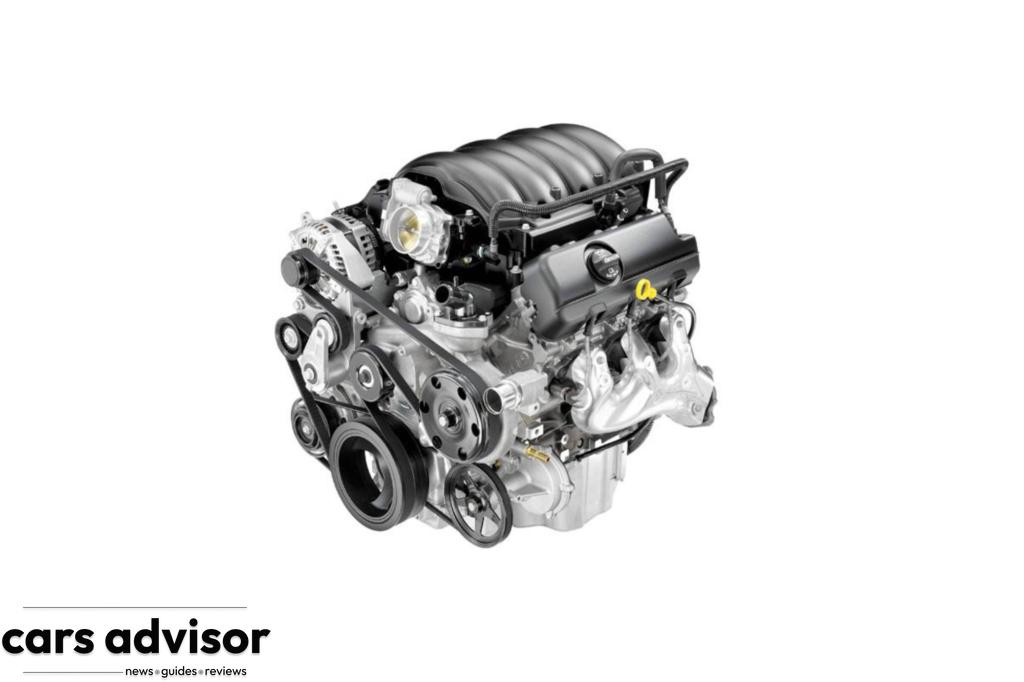
The main difference between the original design of the 4.3-litre Vortec and its updated version lies in the heads, intake manifold, and engine controls.
Its distinctive aluminium block with an engine code of ‘V’ indicates it is a member of the Vortec family. While this engine was designed to be trouble-free, some problems may arise due to age or lack of maintenance.
The most notable feature of the 4.3-litre Vortec is its impressive horsepower for such a small engine—up to 200hp, depending on the year and trim level.
It also includes OBDI and OBDII diagnostic capabilities, making it easier to identify potential issues quickly before they become bigger problems.
Specifications Of 4.3-Liter Vortec Engine
The 4.3-Liter Vortec engine is a notable powerplant that has been used in many GM vehicles since the mid-1990s. This engine features an aluminium cylinder head, and overhead valves, and can be found with either fuel injection or carburetor-equipped intakes.
It also comes standard with EFI (electronic fuel injection) for better fuel economy and performance. Additionally, this engine has several other specs: a bore of 3.89 inches and a stroke of 3.6 inches.
Its compression ratio is 9.5:1; it produces up to 190 horsepower at 4400 rpm and 250 pound-feet of torque at 2800 rpm; its maximum RPMs are 5000.
In terms of emissions control, the 4.3-Liter Vortec includes several components such as catalytic converters, air injector pumps, exhaust gas recirculation system (EGR), oxygen sensors, positive crankcase ventilation systems (PCV), evaporative emission control systems (EVAP), ignition coils and spark plugs.
All of which help reduce environmental pollutants from vehicle exhaust gases into the atmosphere.
Characteristics Of 4.3-Liter Vortec Engine
The 4.3-litre Vortec engine is a reliable and powerful engine used in various vehicles, including the Chevrolet Silverado 1500.
It has been redesigned over time to offer greater power and efficiency than its predecessors. The key features of this engine include its head design, horsepower ratings, and reliability.
Head design plays an important role in the performance of any engine. The 4.3-litre Vortec engine utilizes an advanced cylinder head design that provides improved airflow into each combustion chamber, which helps create more efficient fuel burning during operation.
This increased efficiency translates into higher levels of horsepower output without sacrificing durability or reliability.
Horsepower ratings for the 4.3-litre Vortec engines vary depending on model year and other factors such as transmission type and exhaust system specifications.
Generally, these engines are rated at up to 285 horsepower when properly configured with all available enhancements installed.
They can also achieve excellent torque values, which allow them to provide strong acceleration from a standstill, even when under heavy load or driving off-road.
Overall, the 4.3-litre Vortec engine offers great power and reliability for those looking for a dependable vehicle that won’t break down easily yet still offers plenty of power when needed.
Its advanced head design allows for better airflow resulting in higher horsepower. At the same time, its durable construction ensures that it will remain reliable even in demanding environments such as off-roading or hauling heavy loads.
Design Features Of 4.3-Liter Vortec Engine
The 4.3-Liter Vortec engine has several design features that make it stand out. One of the most notable is its heads, designed to increase airflow and fuel economy while reducing emissions.
The intake manifold also helps airflow by providing more efficient combustion chamber filling and increased power output.
Additionally, the head design of the engine allows for better cooling and improved heat transfer, allowing for higher operating temperatures without sacrificing reliability or performance.
Another feature of the 4.3-Liter Vortec engine is its ability to use both OBDII and OBDI engine controls, depending on the application.
This flexibility makes it ideal for many vehicles because technicians can easily switch between systems.
Finally, this engine type offers excellent diagnostics capabilities thanks to an integrated diagnostic system, making maintenance easy and cost-effective for owners.
History And Evolution Of The 4.3-Liter Vortec Engine
The 4.3-litre Vortec engine is a powerful, reliable and efficient way to power almost any vehicle! It has been around for decades and is among today’s most popular engines.
But what is the difference between 4.3 and 4.3 Vortec? In this article, we’ll explore that question in detail by examining the history and evolution of the 4.3-litre Vortec engine.
The first model of the 4.3-litre Vortec was released in 1985 as part of GM’s Small Block family of engines. Since then, it has gone through several generations of updates and improvements to become more fuel-efficient, powerful and reliable than ever before.
The latest iteration includes features such as direct injection technology, which helps increase power output while decreasing emissions and improving fuel economy significantly compared to earlier engine versions.
Additionally, all versions are designed with lightweight materials like aluminium blocks for improved overall performance without sacrificing durability or reliability.
Overall, there have been many changes made throughout its lifespan. Still, at its core, the 4.3 litre Vortec remains an incredibly dependable workhorse offering excellent performance capabilities at a reasonable price.
It is one of the best values out there when it comes to powering your vehicle safely and efficiently, no matter where you go!
Advantages And Disadvantages Of The 4.3-Liter Vortec Engine
The 4.3-litre Vortec engine is a reliable and powerful engine that has been used in many vehicles since its introduction in the early 1990s.
It was designed as an improved version of the L Engine, with a new head design and increased horsepower ratings. This makes it more suitable for performance applications than the L Engine.
One major advantage of the Vortec Engine is its durability; it can last up to 250,000 miles without any major repairs or replacements.
Furthermore, due to its new head design, it provides better fuel efficiency than its predecessor did. Additionally, their higher power output capabilities are often preferred over other engines for high-performance applications such as drag racing or off-roading.
However, there are some disadvantages associated with this engine, too – one being that parts for them can be hard to find and expensive compared to those for other engines like the older L Engine.
Also, compared to modern engines today, these may lack features like direct injection or turbocharging, which could provide additional performance and fuel economy benefits.
Lastly, depending on how old your vehicle is, you might need to upgrade various components before installing a Vortec engine so that everything works properly together.
Overall, while there are some drawbacks associated with the 4.3-litre Vortec engine, it still offers impressive power outputs at relatively low costs considering how long they tend to last and how easy they are to maintain overall.
For those looking for an affordable yet reliable power source for their vehicle projects, this could be just what they’re looking for!
Difference Between 4 3 And 4 3l Vortec Engine
The 4.3 and 4.3L Vortec engines are two different General Motors (GM) powertrains used in the Chevrolet Silverado, GMC Sierra and other vehicles like the GMC Sonoma, GMC Jimmy and Monte Carlo.

The differences between these motors include their fuel injection system, valve covers, cylinder deactivation technology and FORA platform components.
The main difference is that the 4.3 uses a throttle body type of fuel injection. At the same time, the 4.3L has a Central Port Injection motor with roller cams and an HEI distributor for added performance capabilities.
Both have cast iron blocks, but the 4.3L includes a balance shaft to reduce engine vibrations and an improved oil pan design for better cooling efficiency.
The 4.3L also features a unique valve cover which requires special gaskets, plus it’s equipped with more powerful motor mounts and water pumps than the standard 4.3 model.
Additionally, the newer version offers an increased torque output of up to 260 LB-FT compared to its predecessor’s 200 LB-FT rating making it suitable for heavier loads or tasks requiring extra horsepower.
Such as hauling heavy cargo or towing trailers over long distances efficiently without draining your gas tank too quickly due to its improved fuel economy from cylinder deactivation technology on certain models.
Using Chevy’s 5th generation FULL-SIZE platform architecture for additional safety measures similar to those found in today’s modern SUVs and crossover vehicles riding on this same platform designed by GM Powertrain engineers across several divisions within General Motors Corporation labs worldwide supporting many successful automotive brands worldwide since 1925!
Factors Affecting Performance In Both Versions
The 4.3 and 4.3 Vortec are two versions of the same engine family but have important distinctions affecting performance.
To begin with, the design of the cylinder head is a major factor in determining how powerful an engine will be. The original 4.3-litre was equipped with a traditional-style cast iron cylinder head and intake system, making it reliable but not particularly powerful.
By contrast, the newer Vortec engine uses an aluminium cylinder head and heads for improved airflow and, thus, more horsepower—this makes it much more powerful than its predecessor.
Additionally, Chevrolet introduced several other changes to their engines when transitioning from the older version to the newer one.
For instance, while both were designed using overhead valve technology (OHV), there has been some improvement in fuel efficiency due to better combustion chamber designs on later models like the 6-litre LY6/LC9 Vortec engine being the last model produced by General Motors before discontinuation in 2019.
Furthermore, this new design also helps reduce emissions, leading to increased engine life and better reliability compared to earlier models.
Finally, many aftermarket parts, such as cold air intakes or high-flow exhaust systems, help further improve the power output from these engines.
However, these modifications should only be done by experienced professionals who understand how each part affects engine performance for optimal results.
Fuel Economy Comparison Between The Two Versions
After looking at the factors that affect performance in both versions of the 4.3 engine, it is important to also look at how fuel economy compares. This comparison will show us which version may be more cost-effective for a given application.
One thing should be considered when comparing fuel economy: active fuel management (AFM). AFM is a feature that deactivates four cylinders while the engine is running under light loads or during cruising conditions.
This can help improve overall gas mileage and reduce emissions. While this feature is available on the newer Vortec 4.3L engines, it is not standard on other 4.3L models.
The following list looks at how these two versions differ when considering their impact on fuel economy:
- Standard 4.3L Engine:
- Generally gives an average of 15-20 mpg in most vehicles
- Does not have active fuel management
- Vortec 4.3L Engine with Active Fuel Management:
- Can provide up to 10% higher highway MPG than the standard model due to AFM technology
- Has improved torque and power without sacrificing efficiency
Overall, the differences between these two versions are significant regarding fuel economy.
The new Vortec 4.3L engine offers better performance and improved gas mileage than its predecessor, making it a great option for those who want maximum efficiency from their engine system without sacrificing power or performance levels.
Cost Comparison Between The Two Versions
The 4.3 and the 4.3 Vortec are two versions of the same engine but come at different costs. The differences between them must be considered when deciding which one to purchase.
The regular 4.3 is a cheaper option than the Vortec version because it has fewer features included in its build-up. For example, the regular 4.3 does not include an improved cylinder head design or additional valves that increase power output like those found on the Vortec engine.
Furthermore, its intake manifold is made from plastic instead of aluminium, like with the Vortec model, which makes it less reliable for more challenging conditions and applications where durability matters most.
Additionally, while both engines have similar torque ratings, the regular 4.3 isn’t as fuel efficient due to its lack of advanced technology, such as direct injection systems in newer models; this adds further cost considerations for potential buyers who want better performance without sacrificing economy.
It’s clear that although both versions offer great value for money compared to other engines in their class, there are significant price variations between them depending on what specific feature sets you need or prefer to have installed in your vehicle or machinery setup.
All factors should be taken into consideration before making a final decision about which type of engine will best suit your requirements and budget.
Maintenance Requirements For Both Engines
When comparing the 4.3 and 4.3 Vortec engines, it is important to understand their maintenance requirements.
The Vortec engine typically requires more frequent oil changes than the standard 4.3 engine, but both require regular spark plug replacements and air filter cleaning or replacement as needed.
Another difference between the two engines is the type and weight of oil used in each one; In contrast, conventional 5W-30 motor oil can be used in either engine; 10w-30 synthetic blend oil should only be used with the 4.3 Vortec engine due to its higher compression ratio.
It is also recommended that a certified mechanic handle any repairs or parts replacements on either engine with experience working on these engines. Properly maintained, both engines will run reliably for many years without needing major work.
Parts Interchangeability Between The Two Versions
The 4.3 and 4.3 Vortec engines are both versions of General Motors’ Small Block V6 engine, yet there are key differences between them:
- The 4.3 has an iron block with a 2-inch main bearing journal diameter, while the 4.3 Vortec has an aluminium block with a larger 2.165-inch main bearing journal diameter;
- The 4.3 uses a one-piece rear seal crankshaft, while the 4.3 Vortec has two separate seals around each crank throw;
- The intake manifold on the 4.3 is made of cast iron, while the 4.3 Vortec’s intake manifold is made from composite material; and
- The oiling system in 4.3 is conventional. At the same time, the 4.3 Vortec uses a higher volume pressure lubrication system called “Vortex Oil Management System” to reduce internal friction losses by recirculating excess oil away from the bottom end back into the top end through channels cut into piston skirts and connecting rods for improved cooling performance as well as increased power output potential over its predecessor model. Given these differences, parts interchangeability between these two engines may be limited or impossible due to their structural discrepancies and components designed specifically for each version that cannot be interchanged without compromising either performance or reliability standards set forth by GM engineers during the design process stages.
Reliability Comparison Between The Two Versions
The main difference between the two versions of the Chevy engine is their head design. The 4.3 litre V-6 has a standard cylinder head, while the 4.3 Vortec has an improved version with better airflow and increased cooling efficiency.
This improved head design provides greater reliability for the Vortec edition.
| Feature | 4.3 Liter | 4.3 Vortec |
|---|---|---|
| Head Design | Standard Cylinder Head | Improved Version w/ Better Air Flow & Increased Cooling Efficiency |
| Reliability | Lower than Vortec Edition | Greater Reliability than Lliter Version |
Both small block V8 engines have similar power outputs but differ in fuel economy and reliability.
The 4.3-litre version offers slightly lower power output than the more powerful 4.3 Vortec edition. However, it also typically gets better gas mileage due to its lighter weight and simpler setup when compared to its newer counterpart.
In addition, the higher degree of complexity in the latest model gives way to fewer maintenance issues and less wear on components over time, making it a reliable option for those seeking long-term performance from their engine investment.
Can the Cycling of the AC Compressor Affect the Performance of a 4.3L Vortec Engine?
The ac compressor cycling issue can indeed impact the performance of a 4.3L Vortec engine. Constant cycling of the compressor puts additional strain on the engine, leading to decreased power and efficiency. It is crucial to address this issue promptly as prolonged cycling could result in overheating and potential damage to the engine components.
Common Issues With Both Engines
The 4.3 and the 4.3 Vortec are two vehicles that, while similar in many respects, possess a few key distinctions regarding common issues.
As symbols of reliability, safety, and performance on the road, these engines have become staples of everyday driving for millions worldwide.
However, despite their similarities, there is still a degree of difference between them which can be observed through some common issues associated with both engines.
One problem with both engines is fuel injection failure due to clogged injectors or worn-out seals. This issue often causes an engine misfire and decreased power output from the vehicle’s engine.
Additionally, spark plugs may need replacing at certain intervals due to wear caused by dirt particles entering the combustion chamber of either engine type over time.
Furthermore, fouling of oil filters can also lead to reduced performance if not addressed quickly and efficiently.
Overall, while both vehicles offer a reliable level of performance overall, they each have unique quirks and features that must be considered during maintenance periods.
Understanding these differences can go a long way towards maintaining proper functionality and keeping your vehicle running smoothly for years!
What is the Difference Between a Strut Bar and a Sway Bar?
When it comes to enhancing a vehicle’s performance and handling, it’s important to understand the difference between a strut bar versus sway bar. A strut bar connects the tops of the suspension struts, reducing chassis flex and improving stability during cornering. On the other hand, a sway bar, also known as a stabilizer bar, connects the left and right sides of the suspension to minimize body roll. While both serve to improve stability, their locations and functions differ.
Upgrade Options For Both Engines
The 4.3 and the 4.3 Vortec engines have some differences in upgrade options.
Below are four upgrades that can be done to either engine:
- Courier New – This engine management system helps improve fuel economy, performance, and reliability for vehicles fitted with these engines.
- High-Performance Intake Manifolds – These intakes increase airflow into the cylinders, resulting in increased power output from both engines.
- Performance Chip Tuning – This improves the throttle’s responsiveness by changing parameters such as ignition timing and fuelling mixture to optimize performance while maintaining fuel efficiency.
- High-Flow Exhaust Systems – These systems help free up horsepower and torque while reducing backpressure on the exhaust valves, allowing more efficient combustion within the cylinder heads of both engines. In addition to these upgrades, it is important to regularly service the Vortec engine to ensure it remains reliable over time. Doing so will also extend its lifespan and keep it running at peak performance levels for longer.
Conclusion
In conclusion, the 4.3 and 4.3 Vortec engines are two distinct types of motors with many different features, benefits, and potential drawbacks.
While both are compatible with various vehicles, the 4.3 Vortec engine offers more power and torque than its predecessor while typically requiring less maintenance overall.
Despite this increased efficiency, it is important to weigh all factors before choosing an engine for any given vehicle, as every situation is unique.
Simply put, upgrading to a 4.3 Vortec engine will give one an advantage on the road but may come at a higher cost depending on the current condition of their car or truck.
With careful consideration and proper research into each option available, anyone can drive off into the sunset in no time!
Frequently Asked Questions
How Can I Tell The Difference Between A 4.3 And 4.3 Vortec Engine?
It can be daunting to determine the difference between two engines, especially when they are similar. Determining the differences between a 4.3 and 4.3 Vortec engine is no exception; however, by examining certain aspects of each engine, one can uncover their distinct characteristics.
One way to determine which engine is being discussed is to examine what year it was manufactured or if any major changes have been made since production began.
The 4.3 Vortec was first introduced in 1996 as an upgrade from its predecessor, the original version of the 4.3L engine that had been used for years prior.
This upgrade included improved fuel efficiency due to better breathing capabilities and more power output, thanks to higher compression ratios and other improvements such as roller-style cam followers instead of flat tappets on some models.
Additionally, all versions of this new iteration featured electronic throttle control (ETC), whereas older versions did not have this feature or only select ones did, depending upon manufacturer preference.
The main difference between these two types of engines lies in how much power they produce under different conditions or loads.
The Vortec model produces significantly more torque than its non-Vortec counterpart does across most RPM ranges, particularly at lower speeds where drivers need extra help getting up hills or similar situations with heavy payloads behind them.
Furthermore, Vortec’s modern design also allows for increased fuel economy over its predecessor due to decreased internal friction caused by reduced parts count and updated materials used throughout the construction process; this makes it ideal for anyone looking for maximum performance without sacrificing too much gas mileage.
Are The 4.3 And 4.3 Vortec Engines Compatible With Other Vehicles?
The question of compatibility between 4.3 and 4.3 Vortec engines is one that many people have asked, as these kinds of engines are used in various vehicles.
To understand the differences between them, it is important to look at their specifications, as well as their similarities.
When comparing the two engine types, some key features can help differentiate between them. The first difference is in the output capabilities; while both offer good performance levels, the 4.3 Vortec engine has higher power ratings than its standard counterpart.
The 4.3 Vortec engine also performs better when looking at fuel efficiency due to its improved combustion chamber configuration and other design improvements.
Regarding compatibility with other vehicles, it is important to note that the 4.3 and 4.3 Vortec engines are not interchangeable; they require special modifications or adapters for proper installation in another vehicle type.
Furthermore, care should be taken when considering aftermarket parts for either engine since any changes could negatively affect overall performance and reliability if incorrectly installed or calibrated improperly. Therefore, it is always best to consult an experienced professional before altering either engine type.
What Are The Benefits Of Upgrading To A 4.3 Vortec Engine?
Upgrading to a 4.3 Vortec engine can be beneficial for many reasons. This type of engine offers more power and torque than the standard 4.3 engine, making it a great choice for heavier vehicles or if you are looking for performance improvements.
Additionally, the Vortec engine is designed with improved fuel efficiency in mind, so you will find that it uses less gasoline while still providing better performance.
The construction of the 4.3 Vortec also makes this an attractive option, as it has been built using modern technology and engineering practices, making it reliable and durable over time.
Furthermore, due to its advanced design, the parts required by this engine are often interchangeable with other vehicle models; thus simplifying repairs and maintenance costs should anything go wrong.
All these features increase the potential longevity of your vehicle and lower overall running costs compared to similar engines from other manufacturers.
Upgrading to a 4.3 Vortec provides drivers with additional power output, greater fuel efficiency, and simpler maintenance requirements – all at a relatively low cost compared to similar engines today.
With its robust build quality, efficient operation, and versatility across car models, it’s easy to see why many people upgrade their existing engine rather than buy something new.
Are There Any Common Problems Associated With Either Engine?
Upgrading to a 4.3 Vortec engine can offer many benefits, but it is also important to consider potential problems.
For example, in one study of an individual who had recently upgraded their vehicle with a 4.3 Vortec engine, they experienced some common issues such as a decreased fuel economy and increased noise compared to the original 4.3 engine.
When considering any engine upgrade or replacement, there are always risks that could cause future problems for drivers.
Common problems with the 4.3 or 4.3 Vortec engines include oil pressure drops due to worn-out seals and gaskets, leaking coolant from corroded hoses, and faulty spark plugs leading to misfires.
Additionally, if not properly serviced regularly, both types of engines may suffer from deposits on internal parts, leading to clogging and reduced performance over time.
It is wise for anyone considering an engine upgrade like this to research existing maintenance records for similar make and model vehicles so that preventative measures can be taken before potentially costly repairs are needed later on.
Being prepared by understanding common issues associated with either type of engine will help ensure smoother sailing when investing in your vehicle’s longevity.
Does The 4.3 Vortec Engine Require More Maintenance Than The 4.3 Engine?
The 4.3 Vortec engine is a model of the General Motors small block V8 family introduced in the mid-1990s. It has several improvements over its predecessor, the 4.3 engine, such as improved fuel economy and better performance from an increased compression ratio and larger intake ports.
However, these features come with an increased maintenance requirement for the 4.3 Vortec engine compared to the original 4.3 engine.
In terms of maintenance requirements, there are some key differences between the two models. The 4.3 Vortec requires more frequent oil changes than the regular 4.3 version due to its higher operating temperature range and tighter tolerances which can cause accelerated wear on internal components if not properly lubricated with clean oil.
Also, spark plug replacement must be done much more often since they tend to break down faster in this engine type due to their higher combustion temperatures.
Furthermore, regular inspection and servicing of other components like valves, hoses and gaskets may need to be done more frequently with a Vortec versus a non-Vortec engine to keep it running smoothly for longer periods without needing repairs or replacements.




